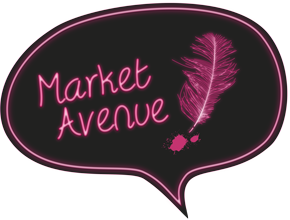13 Feb What’s your House Style?
Have you ever been sitting at your computer, preparing a great piece of copy, but then hit a brick wall? You’ve come to the part where numbers need to be written into your masterpiece, but now you’re wondering which would look better in the sentence you’re writing … should it be ‘¾’ , ‘three quarters’ or ‘three-quarters’?
Maybe you’ve also pondered over the nineteen sixties, nineteen-sixties, 1960s or the 1960’s. And as you continue to write, something else pops into your mind. What about punctuation? Should it be “double quotes” for direct speech, or ‘single’? And what about the sans-serif font being used, is there a preferred style, or is it ok for everyone to just ‘do their own thing?’
Just pause for a moment. You want your company to be taken seriously, and when the majority of your inbound business relies on the quality of your written content AND is what helps get you found online, then shouldn’t it be just right?
You and your colleagues can become effective marketers (and publishers) when your copy has something important to say, is strong, well edited, grammatically correct and most of all, consistent. Watch out for this word … we’ll be using it a lot!
Few of us became professional writers or editors by trade. Whilst our qualifications and expertise may well be grounded in the sciences, history, languages, business or one of the many other disciplines, we now find that we are having to regularly create blogs, ebooks, social media posts and a whole host of other online reports and papers nearly every day. With the need to constantly update website pages and emails, we have become accidental authors; part of an online presence that will make or break our business.
Successful content is now key and it’s worth making the effort to ensure that it’s not only well written, but trust-worthy and reliable. Creating stability and consistency right across the board will do much to enhance the credibility of the brand being promoted and it takes only a few basic resources to accomplish this.
By deciding on your own internal, or ‘House Style’ and building up a Style Guide for all to refer to, you’ll be able to tell your writers how to handle certain elements of punctuation and grammar, advise on special cases of acceptable jargon within your own business area, and outline your own quirks and personal methods that define who you are.
How to make a start
The best way to start creating your guide is for the CEO (or whoever is the final decision maker) to sit down with the people who regularly produce copy of any nature, the copy editor, anyone else you believe is important in your copy-writing operation together with several large cups of coffee, and go through the important factors. These may start with the basics such as font sizes and types; not only those which are acceptable, but those which definitely are not.
Your Style Guide is your own and reflects the personality of you (and your company) so build it up gradually until you think you have everything covered. Some aspects which are important to cover are:
Paragraphs – whether to indent the first paragraph or not. Line spacing. Space between headings and text etc.
Troublesome words – do you prefer Email, email or e-mail? Decide which variation of a word or phrase you will use, and stick to it. Provide an alphabetical industry-specific list of how words are to appear.
Exceptions or banned words – provide a list of words that must not be used, whether they be a pet-hate or just not professional. Seeing these in a new webpage or blog will just make you seethe. Examples might be of modern journalistic words such as ‘quizzed’ instead of ‘questioned’, or ‘sparked’ instead of ‘caused’.
Punctuation – decide how you want to deal with hyphenation, double and single quotation marks, italics, what to capitalize, when to use colons/semi-colons, how to write numbers and dates. This may become a large section of your guide.
Acronyms and abbreviations – these seem to be everywhere, so decide how and where you are going to use them and whether or not a glossary is needed.
Readability – outline some guidance on clashing font and background colours, and other barriers to good readability such as superimposing text.
This list is definitely not exhaustive!
Using a Dictionary
Using a what?
Yes. You will all need to decide on how to be consistent in the spelling of some words that have variants and so a good dictionary is a must. Don’t just rely on the spell checker. We suggest having an ‘office’ dictionary, or even two, that can be thumbed through when the right spelling becomes evasive. A combination Thesaurus is even better. You will find the online version a useful tool too, as long as everyone is aware and uses the same one. Believe it or not, there are differences. If writing is mostly for a UK audience, then try the Collins or the Oxford online dictionaries.
Office dictionaries will need updating occasionally. This is because many compound words tend to change over time, often becoming one word as they become more mainstream. The web version of your chosen dictionary should update regularly for you to look up current usages.
How does a Style Guide work?
Your guide should be full of excellent, down-to-earth help and advice on how you want your copy to appear, not only visually but with respect to good, clear, cogent content. Once armed with this information, writers will not only find the guide helpful, but will know what is expected of them.
The aim is not to create an over-bearing, dictatorial missive, but to produce a guide that gets everyone working to the same brief. From there, they can carry on producing copy that actually helps readers to understand that they would benefit from being future customers! Using the same reference tools will provide a means of defining a brand voice, conveying it and also protecting it.
Consistency
Here we go again! Consistency must pervade every aspect. And don’t forget micro-copy! All those often overlooked little words and phrases that inhabit the nooks and crannies of every web page, such as the buttons that say ‘download here’, ‘download now’, ‘get it now’, ‘create’, ‘log-in’ or ‘get me outa here.’ What words and language do you want to appear there? Do exclamation marks need to be added to any of these? What about using capital letters? These are all for you to decide on.
When you’re building up a rapport with potential customers, you want them to trust you – they need to know your company is solid and stable, not flighty, erratic and shallow. Get the little things right and you can then concentrate on the business of building and maintaining your credibility.
Use it!
Your joint effort will be worthless unless it’s put into practice. Let everyone have a copy of your newly created guide so that they understand the importance of publishing quality copy.
Regularly review your House Style Guide when necessary to make sure it is up-to-date and has evolved as your ideas have evolved. You may need to add further guidelines as more words and phrases have come into use within your area of expertise. Or when you or someone else decides to change their mind!
Confident copy writing
It’s a depressing fact that some businesses seem to be satisfied to let poorly written, disjointed and inconsistent copy ruin their online credibility simply because they haven’t taken the time to ensure that all their writers have at their disposal a clear framework to work to.
Writing good, clear copy that’s a pleasure to read and easy to understand is a big part of being helpful to potential and existing customers, so do everything within your power to get it right.
Ever heard the phrase ‘get your house in order’? Well, now’s the time to ‘get your House Style Guide in order’!
Create your own style … carve your own path if you must, but we’ve said before – and yes, we’re going to say it again – the tools of your trade are your keyboard and the English Language … and using the keyboard is the easy part …
……………………………………………………………………………………………………………………………………
Blogs connected with this topic can be found here:
http://www.marketavenueltd.co.uk/blog
MAL can help with any queries you may have regarding developing a House Style Guide. Just give us a call.






Sorry, the comment form is closed at this time.